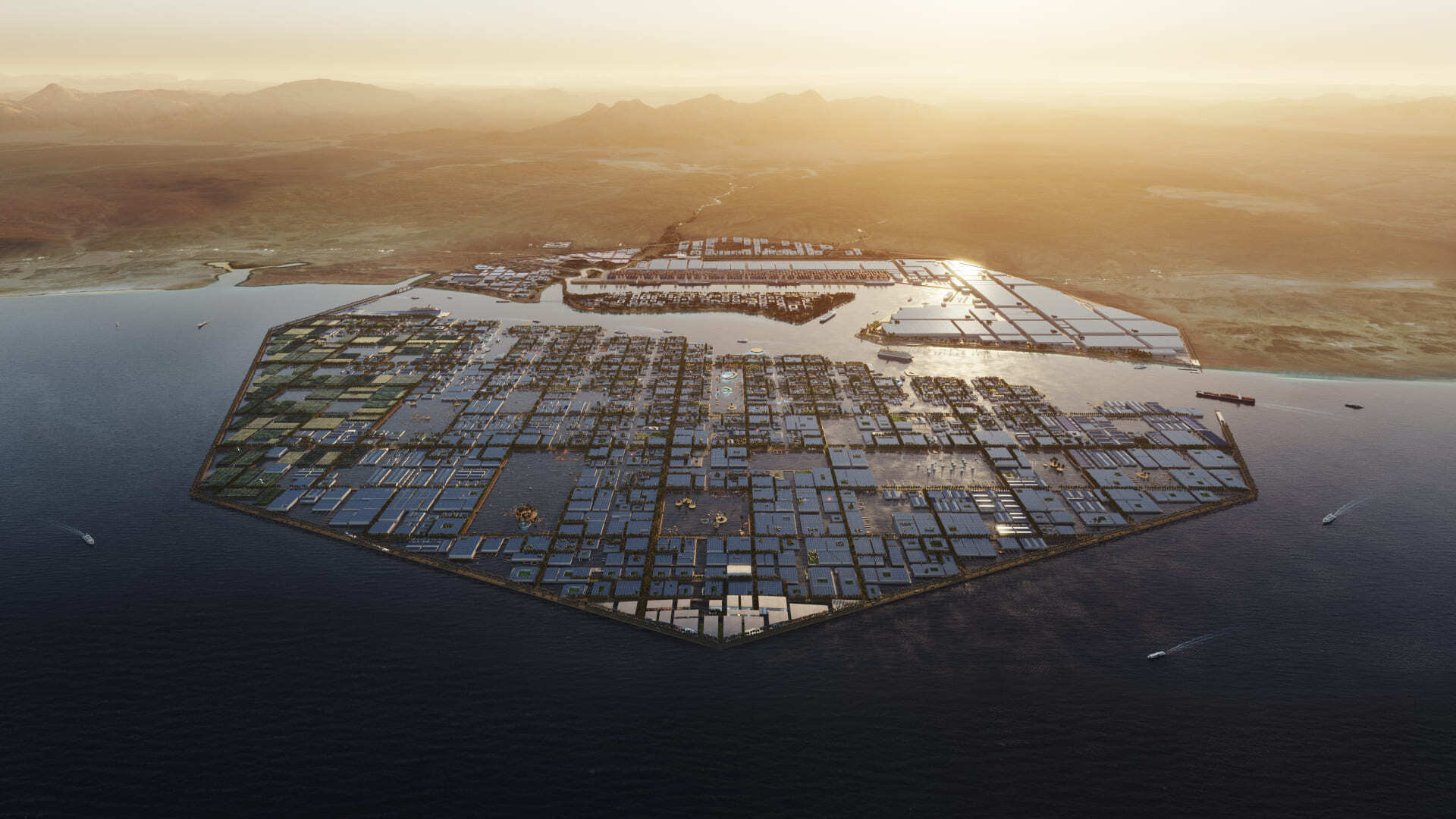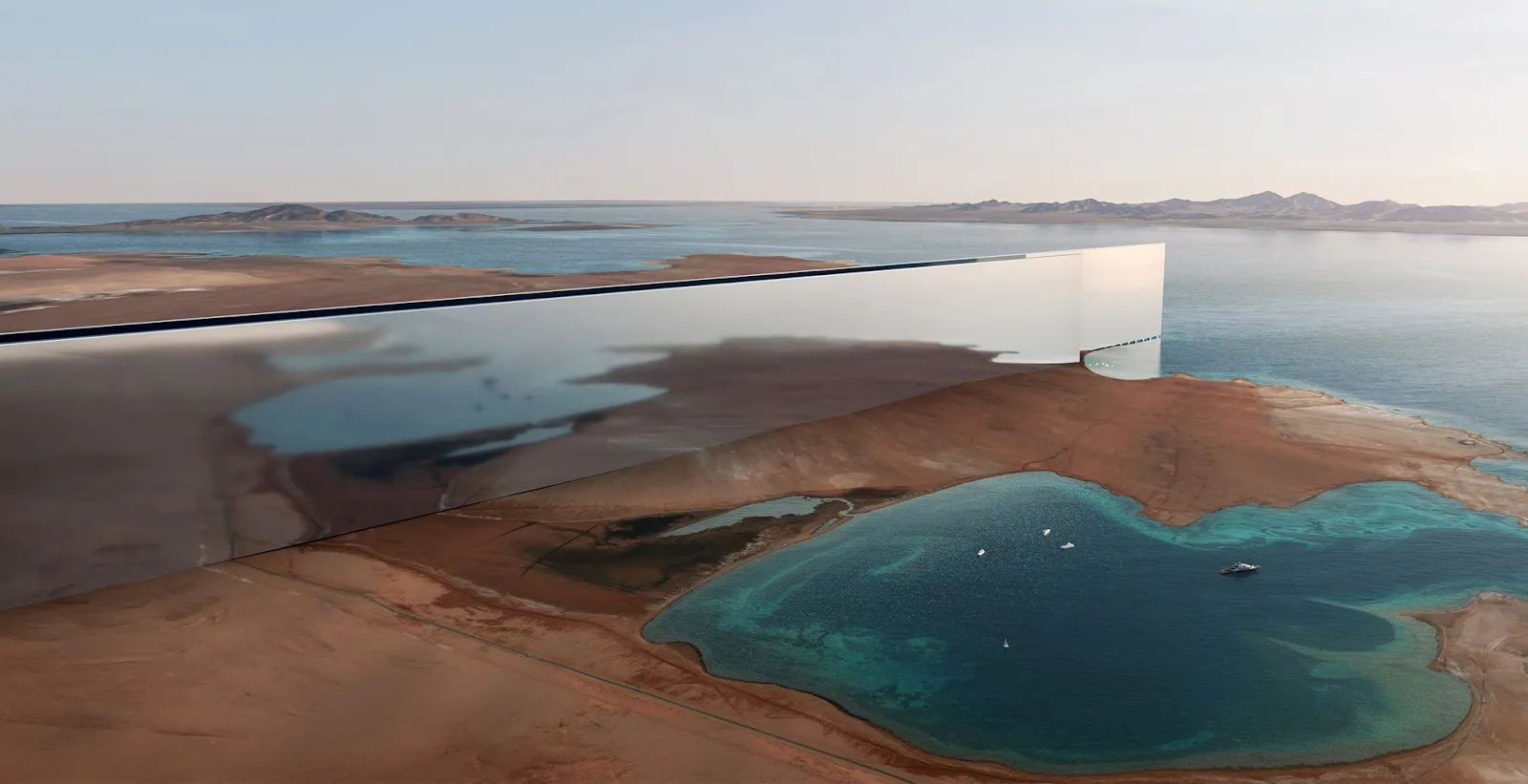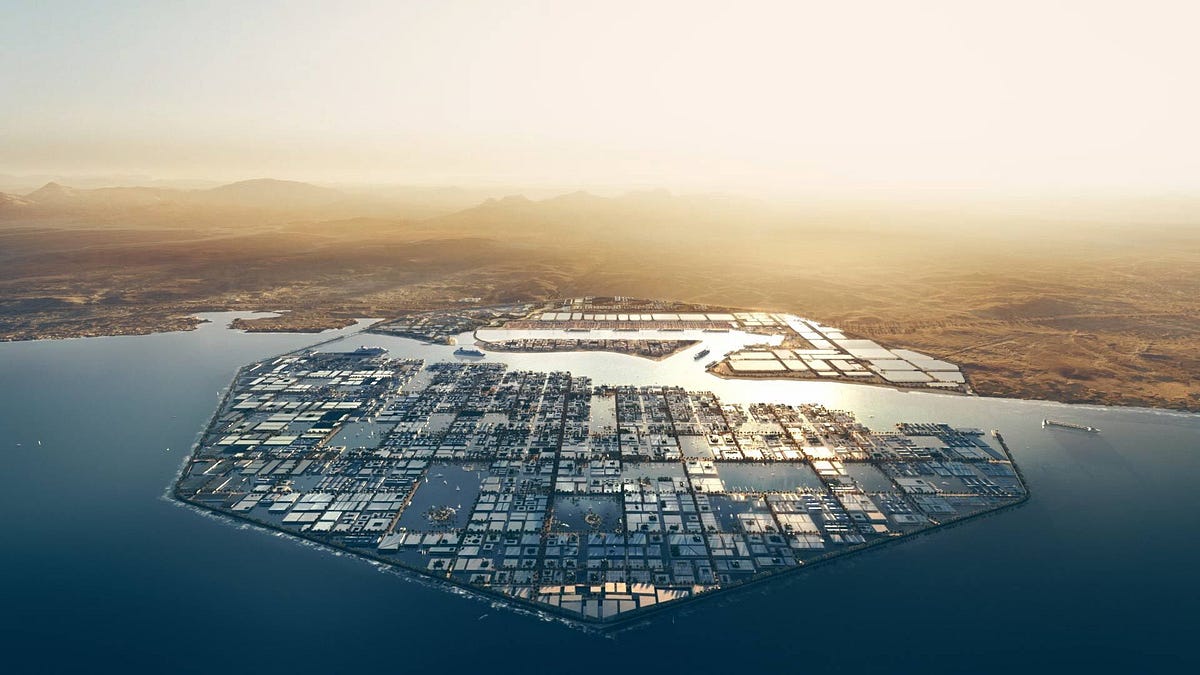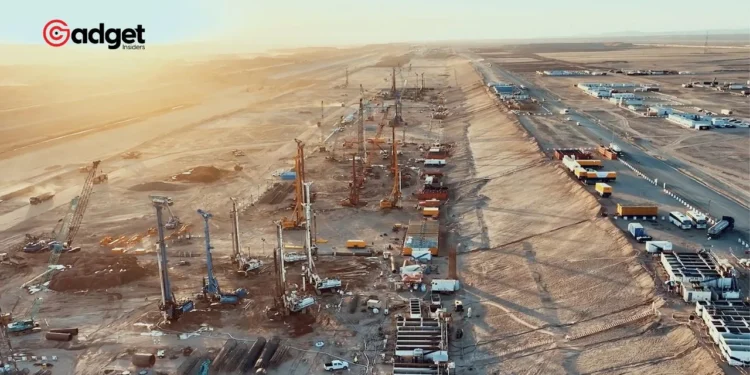Saudi Arabia’s dream of constructing a futuristic desert megacity called Neom is now confronted with stark financial challenges. Despite its grand vision, the kingdom has struggled to secure the necessary foreign investment to bring this ambitious project to life. Here’s a closer look at the cracks appearing in the foundation of Saudi’s most audacious venture.

Saudi Arabia’s High-Tech Vision Meets Skepticism
Introduced in 2017 by Crown Prince Mohammed bin Salman, Saudi Arabia’s Neom was envisaged as a revolutionary city, a blend of advanced technology and high-concept living. This $500 billion megaproject promised to feature a linear city filled with more robots than humans, an all-year ski resort, and theme parks that blur the lines between virtual and real experiences.
However, attracting the foreign investment essential for Neom’s realization has proved challenging.
Kristian Coates Ulrichsen, a fellow at Rice University, pointed out, “Neom was like an imaginary city when it was announced. Now, they’re finding it much more difficult to turn that imaginary vision into some sort of reality on the ground.”
Foreign Investment Falters Amidst Political Controversy
The kingdom’s efforts to draw foreign investment faced a significant setback shortly after Neom’s announcement. The detention of several Saudi elites at Riyadh’s Ritz-Carlton, which had hosted the Neom launch event, sparked a wide-reaching purge that sent shockwaves through the investment community.
The 2018 murder of journalist Jamal Khashoggi further isolated Saudi Arabia internationally, causing many investors to withdraw their support. “The hotel became a detention recap of the Saudi business elites who might have been expected to be the ones partnering with foreign investors,” Ulrichsen added.

The Escalating Costs of Vision 2030
Saudi Arabia’s Vision 2030, with Neom at its heart, has seen its costs balloon, according to Bloomberg. Originally estimated at $500 billion, some experts now project the costs could climb as high as $1.5 trillion. These escalating expenses have led to increased borrowing by the kingdom, signaling potential financial instability.
Andreas Krieg, a Gulf specialist, commented on the public spending, noting, “Vision 2030 consumes a lot of money, and there’s a lot of inefficiencies, especially when it comes to Western consultancy firms.”
Human Rights Concerns Cast a Long Shadow
Neom’s development has also been marred by allegations of human rights violations. Reports claim that the Saudi government authorized lethal force to displace the Huwaitat tribe from their ancestral lands to make way for the megacity. This has led to international scrutiny and calls for businesses to assess the human rights risks before engaging with Saudi projects.
Lina al-Hathloul from ALQST, a human rights organization, stated, “Neom is being built on Saudi blood. This project symbolizes the current state of the country: it was decided without the people’s consent, and when they oppose it, they are sanctioned in courts that lack independence.”

The Uncertain Future of The Line
Despite these challenges, construction on The Line, a key component of Neom, has intensified. The project has seen a doubling of its workforce over the past year, with satellite images showing significant construction activity. Yet, the feasibility of the project remains questionable as Saudi Arabia revises its population targets and faces an ever-growing bill.
As Neom continues to strive for global relevance and attract necessary investments, the kingdom’s ambitious vision is tested by reality. The challenges it faces not only reflect the financial and ethical complexities of such mega projects but also underscore the broader implications for Saudi Arabia’s future on the world stage.










